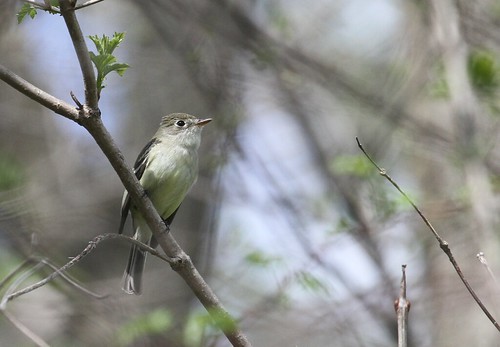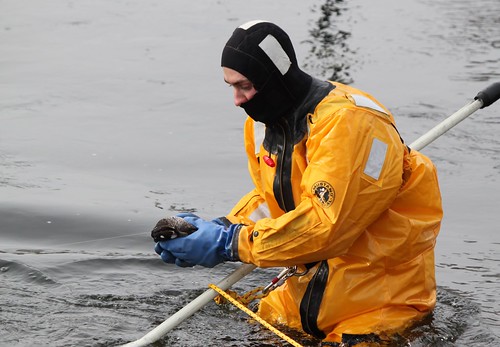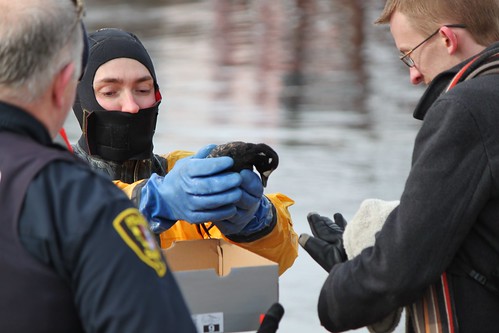Spring is a
wonderful time to be out in nature. It is a season of dramatic changes in
weather, plantlife, and wildlife. Birds are one of the more significant areas
that are noticed during the springtime because of migration, when birds return
north to their breeding grounds from their wintering grounds as far away as
South America. Needless to say, it is during this time that birders,
birdwatchers, and wildlife photographers focus their attention on parks and
forest preserves around the country in search of some of the rarest and most
beautiful of the migrants we see annually, or even just on rare occasion such
as vagrants. Migration brings anything, and the best thing those who hope to
witness the marvel of migration can do, is find a good place to be to watch as
migration unfolds. I hope in this piece, people will discover one of the
premiere destinations for witnessing the wonders of migration in Kane County,
and possibly even northern Illinois. May I present, Jon J. Duerr Forest
Preserve in South Elgin!
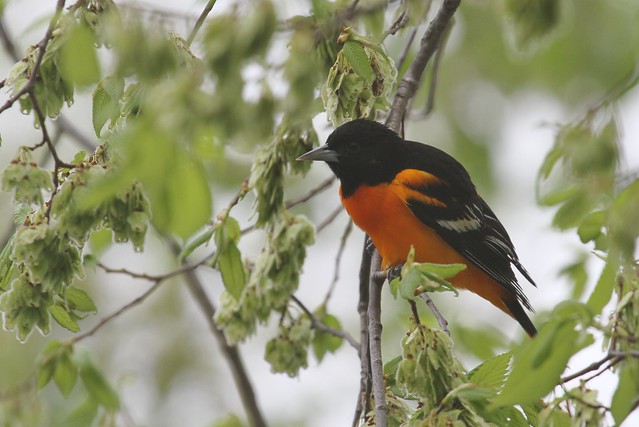 |
| Baltimore Oriole |
Jon Duerr
Forest Preserve, formerly known as Black Hawk Forest Preserve, lies along
Illinois Route 31 east of McLean Boulevard in South Elgin. It was re-named in
2004, after the retired executive director of the Kane County Forest Preserve
District (and avid birder) Jon Duerr, in order to recognize his efforts with
and contributions to the Forest Preserve District during his service time. Jon
Duerr Forest Preserve contains a large area of mature woodlands, lush woodland
edge habitat, some riverfront territory and an old quarry reclaimed by shrubs
and underbrush making for excellent sparrow habitat. For birdlife, eBird.org
has 192 species of bird recorded at Jon Duerr Forest Preserve alone. The
diversity of habitat makes it an ideal place for a wide variety of birds, and
naturally a few rarities have occurred such as Townsend's Solitaire,
Sharp-Tailed Sandpiper and King Eider. Jon Duerr Forest Preserve is also a
wonderful place to view White-Tailed Deer which roam about the entire preserve,
and insect lovers may also enjoy a stroll through this preserve as well,
enjoying the diversity of butterflies and dragonflies. However, as a bird
enthusiast, this blog is mostly about the birds, so let's take a look around,
shall we?
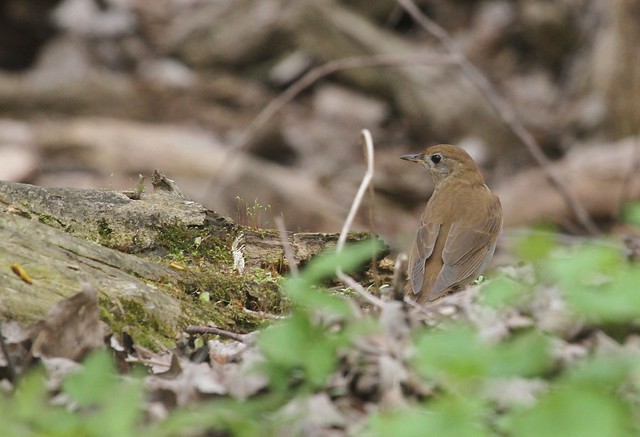 |
| Veery, a type of thrush. |
For
clarification, there are three parking lots at Jon Duerr Forest Preserve, and
they are the upper lot, which is closest to the train trolley tracks. The
middle lot, which as its name may suggest is in between the upper lot and the
lower lot. Finally, there's the lower lot, which is closest to the river. We'll
start as I normally do upon a typical visit to Jon Duerr Forest Preserve, and
go to the quarry area from the upper lot. To make it to the quarry area, it is
necessary to follow the train trolley tracks back. The train trolleys are occasionally
in operation, so always be cautious, there's easily enough room on either side
to step away from the tracks. Going back along the tracks, there are woods
along both sides initially, but as you head further to the east along the
tracks, the woods give way to the quarry, a scrubby area with bushes and trees
that often have fruit on them, but mostly in the winter (junipers). It was
because of these junipers that a Townsend's Solitaire decided to set up shop at
this preserve for the winter of 2013-2014. During any time of the year, this
area provides good habitat for sparrows, but especially in the spring. It can
be productive for songbirds such as Brown Thrashers, Indigo Buntings, and
sometimes warblers, including possibly Yellow-Breasted Chat.
 |
| Townsend's Solitaire, rare to our area. |
As you
continue east along the tracks, you'll come to an intersection with a footpath,
which to the north extends back into the quarry, and to the south goes into the
woods. This is the back end of the trail that goes east from the middle lot.
Heading into the woods along this trail, songbirds really take over as these
woods are the habitat of choice for various thrushes, warblers and other
songbirds. Be sure to keep a watchful eye for Black-Billed Cuckoos flying
around the canopy too.
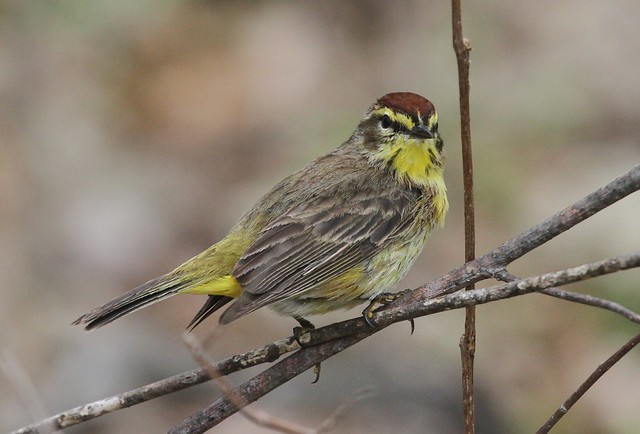 |
| Palm Warbler |
Upon reaching
the middle lot, heading towards the lower lot will bring you to the riverfront.
Here various types of waterfowl have been seen over the years, including the
best of the best, a rare King Eider! The King Eider was a great reminder to
keep checking water wherever you go, you never know what could be on it on any
given day. During warm, dry summers, the river can be a little shallow in this
stretch, revealing sandbars and suitable habitat for shorebirds. Typical
species seen include Spotted and Solitary Sandpipers, but others such as
Greater and Lesser Yellowlegs may be found here too. A rare Sharp-Tailed
Sandpiper (which is very similar to the Pectoral Sandpiper) was once spotted
here.
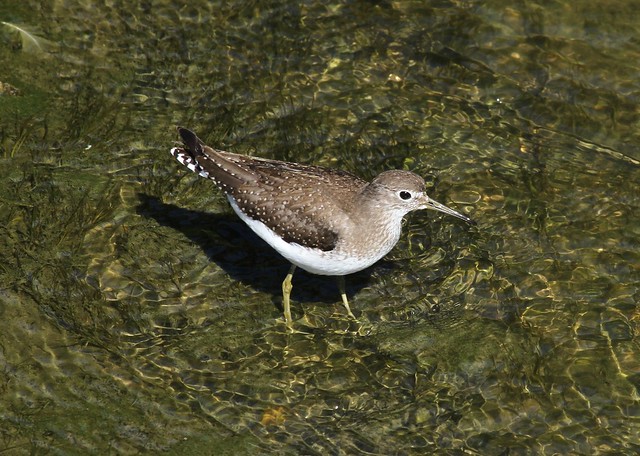 |
| Solitary Sandpiper |
The trail
closest to the river eventually converges with another bike trail. Taking a
right will bring you to a bridge that leads across the river to the nearby
Tekakwitha Woods Forest Preserve. Taking a left will take you further along the
river. The brush and bushes along the river here host many species of warblers
on any given spring morning, leading to good diversity, and occasional flyovers
such as Broad-Winged, Cooper's and Red-Tailed Hawks, or even Bald Eagles and
Osprey do occur. Keeping a sharp eye to the sky from time to time can be
fruitful!
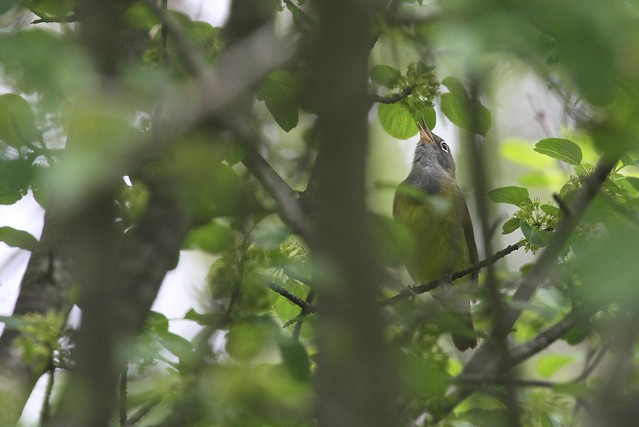 |
| Singing Connecticut Warbler |
Heading back
towards the parking lots, you can see the bike trail extends beyond the parking
lots. This path leads to open grassy fields bordered by short bushes, shrubs,
and some pine trees. These grassy fields are rampant with Field Sparrows, and
also provide friendly habitat for Eastern Bluebirds and the occasional
Clay-Colored Sparrow. The pines that border the grassy fields also run along
the road into the preserve from Route 31. These pines are good for both Golden
and Ruby-Crowned Kinglets, and occasionally Pine Warbler.
 |
| Pine Warbler |
Any and every
area within Jon Duerr Forest Preserve is typically birdy on a spring day,
during migration. Unusual warblers have shown up, such as Kentucky,
Worm-Eating, Cerulean, Yellow-Throated, Prothonotary, and both Connecticut and
Mourning Warblers. In one day of birding in May of 2014, I saw and heard five
different Connecticut Warblers! The different habitats within the preserve lead
to excellent diversity, and really make it difficult to decide on any area not
to cover during any visit. A walk around the entirety of Jon Duerr Forest
Preserve can be lengthy and tiring, but it also can be well worth the effort
given. Any day during migration at Jon Duerr Forest Preserve, is a good day! It
is one of a few places in Kane County that can truly be considered a "can't
miss" birding location. Do what you can to get out and explore this
wonderful preserve for yourself!
Brendon Lake



